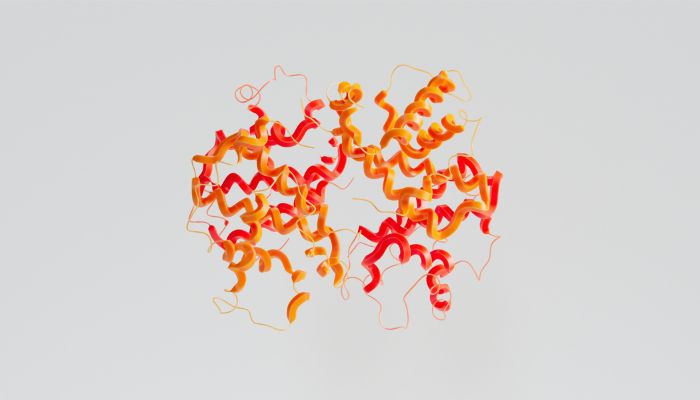|
Autoantibodies called ATAs appear to speed disease progression, study finds by Margarida Maia, PhD from Scleroderma News About half of the people with suspected very early systemic sclerosis (SSc) may go on to develop definite disease, and those who test positive for anti-topoisomerase antibodies (ATAs) are more likely to experience faster disease progression. That’s according to a study from the Netherlands where the proportion of people who tested positive for ATA, autoantibodies associated with SSc, was very low among those with suspected very early disease. “The low ATA prevalence among patients with suspected very early SSc suggests swift disease progression in ATA-positive SSc and consequently a different approach to identify this subgroup before development of irreversible organ damage,” the researchers wrote. The study, “Progression from suspected to definite systemic sclerosis and the role of anti-topoisomerase I antibodies,” was published in the journal RMD Open. Diagnostic workup includes extensive testing SSc, also known as scleroderma, is characterized by self-reactive autoantibodies in the immune system attacking healthy tissues and causing them to become scarred. Scar tissue can build up in the skin and in internal organs such as the heart, kidneys, lungs, and digestive tract. As part of the workup toward diagnosis, patients usually undergo examination for medical history, physical assessments, and various other tests, including blood tests to check for the presence of autoantibodies. Because not all patients meet the criteria for diagnosis, doctors came up with criteria for suspected very early SSc. The criteria consist of Raynaud’s phenomenon (fingers and toes that feel numb, prickly, and frigid in response to cold temperatures or stress), the presence of SSc-specific autoantibodies, puffy fingers, and changes in the small blood vessels under the fingernails. “Specific autoantibodies are important risk factors for progression from suspected very early SSc to definite SSc,” the researchers wrote. In earlier work, however, they found that only a small proportion of patients with suspected very early SSc tested positive for ATA. To know more about ATA and how these autoantibodies contribute to disease progression to definite SSc, the researchers carried out a review of the literature. The results of the literature review suggest that ATA positivity is associated with a more rapid progression of disease. They identified a total of 14 studies where the proportion of people with suspected very early SSc who tested positive for ATA ranged from 0.2% to 24%. The proportion was lowest among studies that recruited patients based on Raynaud’s phenomenon alone. Progression from suspected very early SSc to definite SSc occurred in up to 52% of patients. A first symptom other than Raynaud’s phenomenon served as a proxy for progression to definite SSc. All but one study found that the presence of SSc-specific autoantibodies increased the risk for progression from suspected very early SSc to definite SSc. “The results of the literature review suggest that ATA positivity is associated with a more rapid progression of disease,” the researchers wrote. However, “the mechanism behind this is unknown.” To delve deeper into a possible mechanism, the researchers drew on data from the Leiden CCISS cohort. Of the 708 people who met the criteria for definite SSc, 163 (23%) tested positive for ATA. Among the 115 people with suspected very early SSc, ATA were found in four (3%). Men and those with diffuse scleroderma seem to progress faster to definite SSc The time from Raynaud’s phenomenon to definite SSc was available for all but two of those who tested positive for ATA. About one in three (34%) went on to develop definite disease within three months of experiencing Raynaud’s phenomenon. Another 34% progressed to definite SSc between four and 24 months after experiencing Raynaud’s phenomenon, and the remaining 32% went on to develop definite disease after 25 months or longer. The most common first symptom other than Raynaud’s phenomenon was skin tightening (48%), followed by sclerodactyly or puffy fingers (17%). Those with the shortest time to definite SSc were more likely to be men, have more skin symptoms, and have diffuse scleroderma, a type of SSc with symptoms that worsen quickly and are usually more severe. Higher levels of the immunoglobulin G (IgG) type of ATA were linked to shorter time to definite SSc. In people with an ATA-IgG level equal to or greater than 1,000 AU per milliliter, the median time to develop a first symptom other than Raynaud’s phenomenon was seven months; in those with an ATA-IgG level less than 1,000 AU per milliliter, it was one year. “ATA-IgG levels tend to be higher in patients with ATA-positive SSc with less time between onset of Raynaud’s phenomenon and first non-Raynaud’s phenomenon symptom, as proxy for disease progression,” the researchers wrote. Comments are closed.
|
AuthorScleroderma Queensland Support Group Archives
July 2024
Categories
All
|
Scleroderma Association of Queensland
©Scleroderma Association of Queensland. All rights reserved. Website by Grey and Grey.

